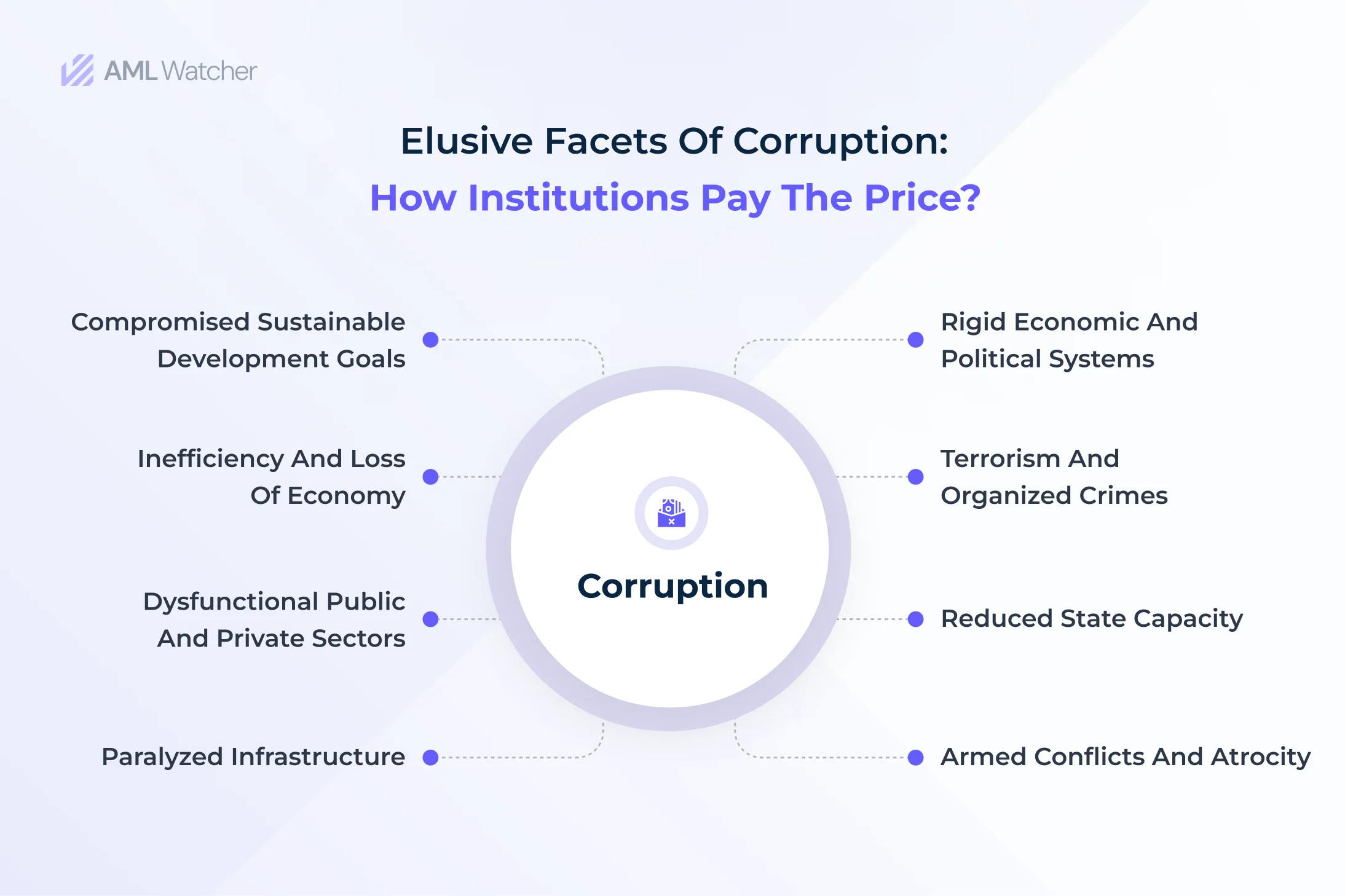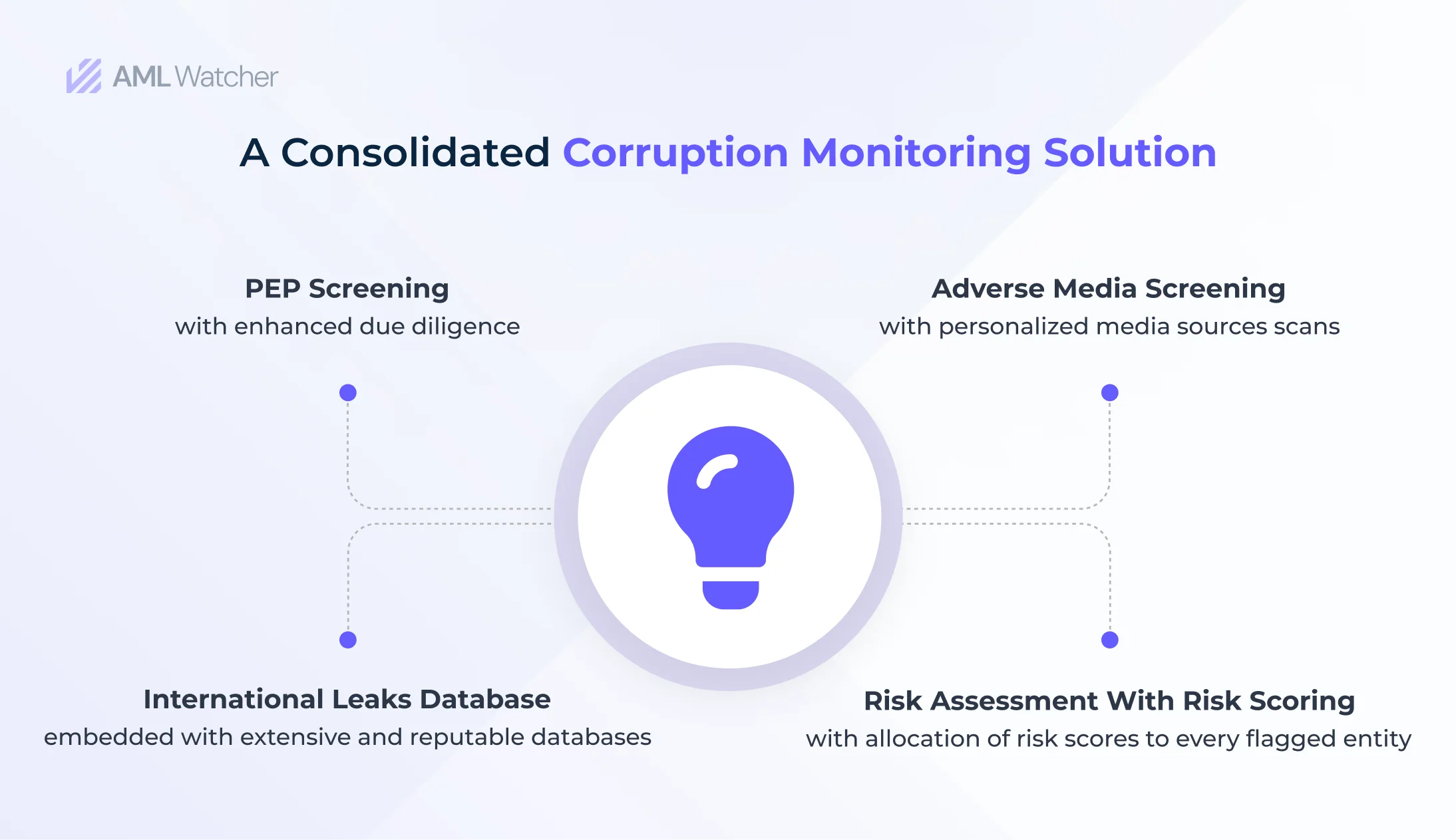
Corruption Monitoring – A Proactive Approach to Eliminate Fraud

Recognized as a multi-billion-dollar industry, corruption and fraud has adversely impacted the institutions on a larger scale and the grinding has not seen any cease in its increasing rate. Overviewing the magnitude of the problem, one might leave the optimism and announce the efforts to combat corruption futile. When the organized crime actors are always one step ahead of the fighters, a reliable and proficient corruption monitoring plan is needed more than ever. This blog is aimed to help you in understanding the dynamic framework of corruption and how monitoring of corruption with its ability to navigate through the ambiguities of complex financial crime networks enable the institutions to identify, prevent, and mitigate the corruption risks.
Before digging deeper into the corruption landscape, let’s develop a surface level understanding of how corruption is correlated with money laundering on an inherent basis and how the indicators of monitoring corruption can enable any institutions to deal with such risks.
Corruption and Money Laundering: Back and Forth Linking
The wide umbrella of corruption covers multiple aspects of a corrupt behavior including embezzlement, extortion, cronyism, frauds (financial and non-financial), bribery, and money laundering, defined by UNCAC (United Nations Conventions against Corruption). However, addressing corruption on a global scale, it goes hand-in-hand with money laundering impacting financial institutions more like birds of a feather flock together. Influencing the money laundering activities under organized crime regime, corruption motivates money launderers to take refuge into a complex and less compliant financial ecosystem and convert their black money into white money. The intricate nature of this criminal phenomena makes it difficult to exactly measure corruption. However, understanding the scale of risks and their correlation with measurable factors allow the institutions to develop and implement a corruption monitoring process as a corrective measure. Facilitated by the corrupt phenomena, illicit money is laundered through an organized process as visualized below.
Erosive Corruption and Subtle Upshots for Institutions
The magnitude of the problem associated with corruption in terms of money laundering can be understood with the fact that around $800 billion to $2 trillion is annually laundered which comprises 2-5% of global GDP, penned down by the United Nations Office on Drugs and Crime (UNODC). The complexity of the corruption framework and the inactivity of the corruption evaluation processes makes it even harder to estimate the total amount that undergoes the cycle of money laundering. Unlike the measurability of corruption, it is not difficult to comprehend the facets of corruption and its facilitated criminal phenomena, money laundering. Failure to eradicate corruption brings societies to the verge of destruction in terms of injustice, demolished capacity of a state, poverty, and the list goes on. Some of the major shortcomings have been highlighted here.
Compromised Goals of Sustainable Development
Undermining the SDGs (United Nations Sustainable Development goals) particularly, goal 16 which emphasizes on development of strong institutions with peace and justice maintained, corruption erodes the basis of sustainable development and growth for any country or institutions. According to UNODC, the corruption rate in Africa has caused the loss of 25% of its GDP. This trend of SDGs deterioration requires all institutions and businesses to develop a corruption monitoring process in their systems.
Inefficiency and Loss of Economy
In 2016, the IMF (International Monetary Fund) published a report highlighting the economic cost of corruption and all the associated crimes. Particularly raising concerns about bribery, around $1.5 to $2 trillion is lost in bribery costing 2% of the global GDP. Taking other associated crimes of corruption such as tax evasion, fraud, and money laundering into account, the Panama Papers also known as Mossack Fonseca Papers13 revealed the corruption and money laundering cases of elites leading to unstable and inefficient economies along with political sparks. Not only do the roots of the economy weaken but corruption gives birth to the underground economy.
Decayed Public and Private Sectors
Dysfunctioning both public and private sectors, corruption causes every organization to lose 5% of its revenue every year. The public sector and financial institutions affected by corruption lead to inefficiencies in their operation and lack of innovation, undermining the sense of individual hard work. Inability to implement corruption monitoring, the institutions and global economies face turbid consequences in the form of terror funding, money laundering, demolished state abilities, organized crimes, and human rights violations. The Open Society Justice Initiative evidently highlights a close link of corruption with human right violations in Mexico.
Inefficient Corruption Monitoring Protocols in AML Landscape: Case Studies
Permeating through the institution’s framework, corruption triggered numerous money laundering and financial frauds such as bribery, challenging the anti-money laundering compliance and regulations. Highlighting the fall of institutions to corruption, Enron scandal shows the largest bankruptcy in the history of the United States recalled as the fall of wall street darling. Absence of transparent and efficient monitoring of corruption cost the reputable institution a heavy price where the company was left with only 200 employees facing lawsuits.
One of the world’s biggest companies, Siemens, was charged with a $1.6 billion fine for committing bribery, the largest amount in the history of the corporate sector. Violating the Foreign Corrupt Practices Act, Siemens won a $1 billion contract at the cost of a $40 million bribe. In its orchestrated and massive corruption roadmap, the company paid millions of US dollars to Israel, Argentina, China, Iraq, and Venezuela for the said purposes.
After a decade-long investigation and AML enforcement actions, FinCEN revealed that HSBC (HongKong and Shanghai Banking Corporation) willingly facilitated WCM Ponzi Scheme in moving their laundered money (around $881 million) to offshore accounts. The banking firm was found guilty and charged a fine of $1.92 billion. It was served with probation of five years on the account of enforcing rigid AML regulations. However, the trail of corruption did not stop there, investigated by the the ICIJ (International Consortium of Investigative Journalists) and several other media partners, HSBC continued facilitating Ponzi schemers and moving ransacked state money of shell companies and black money of drug traffickers even after the bank was under strict observation.
Amid the corruption driven financial crimes, the need for a state of the art corruption monitoring can not be neglected like before. Lesson being learnt, the employment of effective countermeasures and application of indicators of monitoring corruption can help institutions become resilient against heavy compliance cost and business losses.
Endangered Institutions: Inevitable Monitoring Measures
Empowering against the complex and inevitable corruption activities, the institutions opt for tech-driven and robust online corruption monitoring services which covers a vast mode of screening protocols. They include,
PEP Screening
Monitoring tools with PEP list screening embedded in their systems enable institutions to identify and prevent the financial abuses by PEPs all around the world. With customer and enhanced due diligence, PEP screening allows financial and non-financial institutions to stay compliant with FATF regulations and ensure the eradication of corruption within the organizations.
Adverse Media Screening
The robust media sources scans of flagged or blacklisted entities offers institutions to perform screening at a global to the regional level. It ensures that not a single scandal or traces of corruption evidence goes unnoticed from the online corruption monitoring system.
International Leaks Database
Automated with extensive international leaks databases, the monitoring tools unveil the assets and offshore accounts of companies. This integration of international leaks database equips your institution with timely and vigilant risk assessment associated with your business partners and customers.
Risk Assessment through Risk Scoring
The AI/ML driven advanced algorithms and real time monitoring facilitate the institutions with enhanced risk assessment by allocating risk scores to entities and transactions. With effective due diligence, such automated monitoring tools leverage the institutions in preventing integrity damage and financial crimes.
How is AML Watcher your Consolidated Monitoring Solution?
We at AML Watcher automate our corruption monitoring solution with reputable data sources covering more than 180 countries and invaluable insights help organizations measure the state of corruption and white collar crimes. Our comprehensive screening allows you to,
- Track global corruption trends through an extensive database from a variety of international, regional and domestic institutions.
- Automated record keeping and audit trail functionality in AML Watcher solution leverages you to maintain a transparent and accountable compliance workflow.
- Understanding the intricate networks of corruption, our monitoring solution enables the institutions to gain insights on every corruption cases and their effects on the lifecycle of a customer
Through a robust monitoring of corruption, eradicate potential financial and legal risks with AML Watcher and safeguard your institution from grave upshots of corruption in its all forms.
Related Articles
We are here to consult you
Switch to AML Watcher today and reduce your current AML cost by 50% - no questions asked.
- Find right product and pricing for your business
- Get your current solution provider audit & minimise your changeover risk
- Gain expert insights with quick response time to your queries

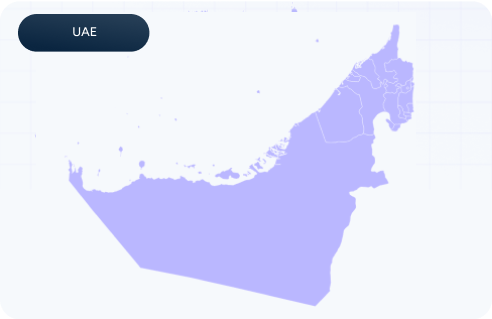 Compliance Guidelines: United Arab Emirates
Compliance Guidelines: United Arab Emirates
 Compliance Guidelines: Germany
Compliance Guidelines: Germany
 UK to Launch World’s First Sanctions Regime to Target Upstream People Smuggling
UK to Launch World’s First Sanctions Regime to Target Upstream People Smuggling
 Utah Lawsuit Alleges TikTok Livestreams Facilitated Money Laundering Activities
Utah Lawsuit Alleges TikTok Livestreams Facilitated Money Laundering Activities

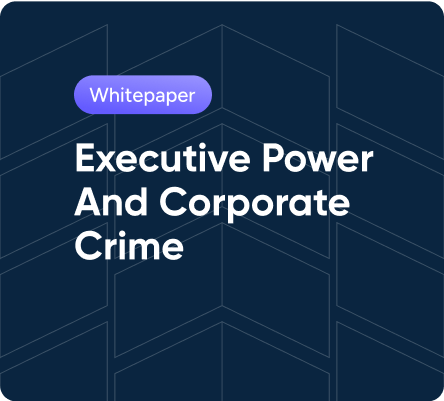
 Why Should states conduct AML Due Diligence for CBI/RBI Investment Schemes?
Why Should states conduct AML Due Diligence for CBI/RBI Investment Schemes?
 How can businesses comply with US sanctions on vessels?
How can businesses comply with US sanctions on vessels?
 Difference In AML: DNFBPs Vs Financial Sector
Difference In AML: DNFBPs Vs Financial Sector
 Difference in EU and US Sanctions Programs - How It Impacts Compliance?
Difference in EU and US Sanctions Programs - How It Impacts Compliance?
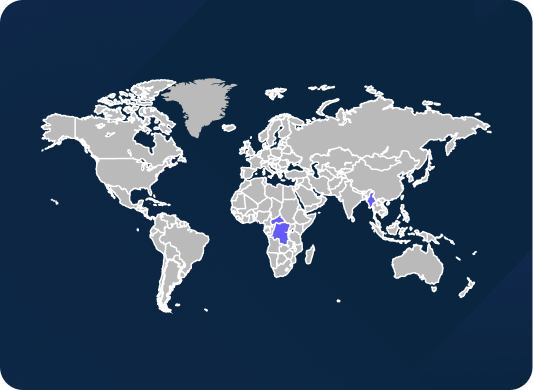 How Regulatory Gaps Fueling Money Laundering in High Risk Jurisdictions?
How Regulatory Gaps Fueling Money Laundering in High Risk Jurisdictions?
 Mapping Anti-Money Laundering Regulations in Malaysia
Mapping Anti-Money Laundering Regulations in Malaysia


